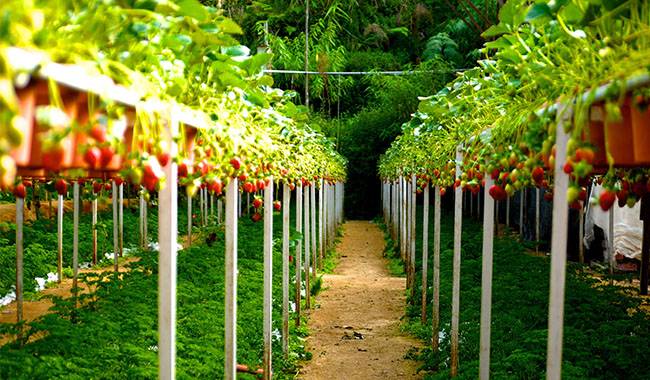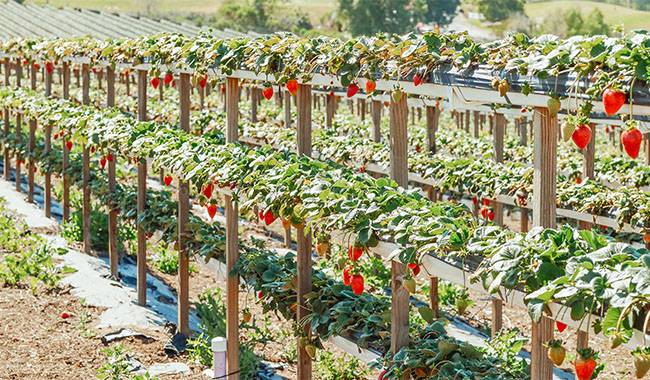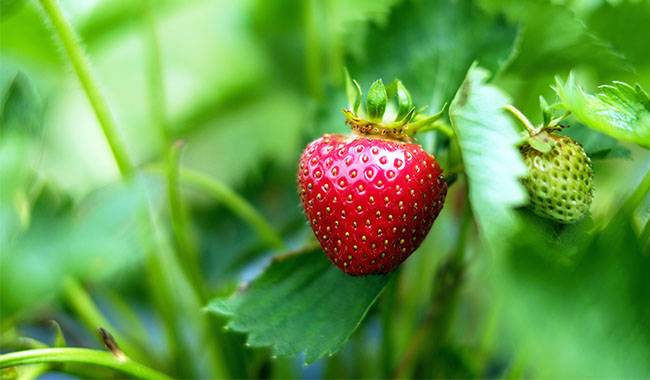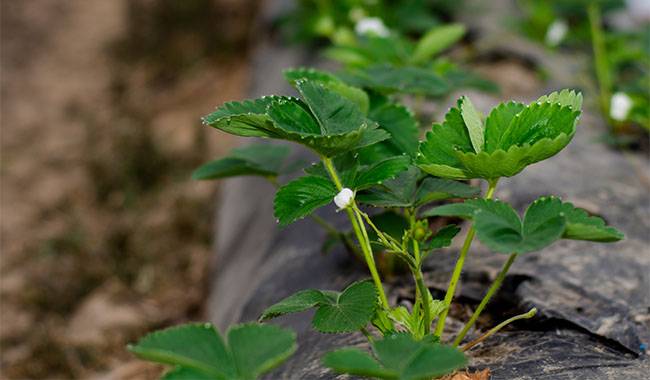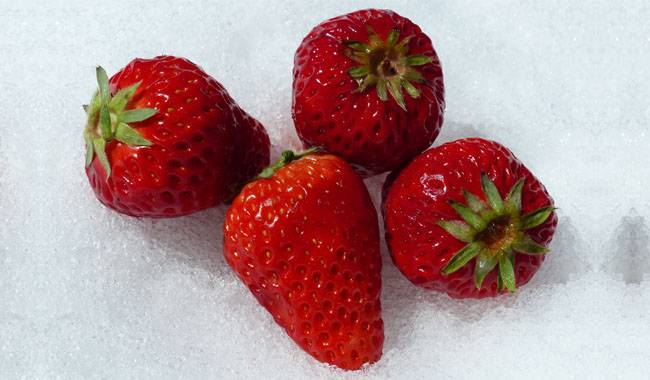
Strawberry, or more appropriately called garden strawberry, is the most common berry crop. It competes only with honeysuckle, but not by region, but by the time of appearance of the first berries. It is these two crops, honeysuckle, and strawberry that first provide us with a rich source of vitamins, sometimes the most important and necessary.
In this article we will try to tell you if you need to cover our favorite berries with the harsh frosts of winter, and if so, how to do it cover strawberry.
DOES IT MAKE SENSE TO MULCH STRAWBERRIES?
Gardeners often debate whether it is necessary to mulch strawberries and whether snow can be the best mulch for it. Sure, if you grow old varieties on plots year after year and live in the western United States, it’s fine.
But what about those who decide to buy new, larger-fruited strawberry cultivars and live in areas where winter frosts occur even at the beginning of October? Of course, in these cases, it is necessary to mulch, and now there are many methods and possibilities, and they are available to everyone.
WHY DO I NEED TO MULCH STRAWBERRIES?
In principle, this question is reasonable, because even new varieties can withstand frosts of -22°F (-30°C), certainly under conditions of covering with snow, but in recent years the unpleasant phenomenon of provocative thawing has become more and more frequent even in northern regions.
Imagine – suddenly the snow starts to melt, the plants try to wake up, taking a false spring as its beginning, and then comes the cracking frost again. Any bud can die as a result, and in strawberries even more. And here will save a shelter and reliably protect it.
In addition, the plots may be different: some plots are well snowed, and the first gust of wind blows away others, exposing the whole strawberry plantation. In this case, some “weak character” varieties may have frozen at 16°F (-9°C) and may be completely frozen at 5°F (-15°C).
Here, covering strawberries is simply necessary. If it does snow on the plot, nothing bad will happen, and the shelter will protect the area if the wind sweeps away the snow that hit earlier. Not everyone will want to plant shrub plants around the property to retain the snow, so using a shelter is considered the most feasible.
Deterioration is also the reason a parcel needs to be covered. In the early stages of winter, when strong, very cold winds sometimes rage and there is still no snow, many strawberry leaves, and sometimes flower buds, are killed by this cold wind. They are simply dry and dead-looking in spring – just in time to have a shelter that will surely protect them from this scourge.
Expansion means that when the newly planted bushes over frozen soil can simply push out and will also help to cover in time, it normalizes the temperature of the soil and does not allow her to freeze strongly and expansion does not.
Frost on the roots – in autumn, when there is no snow for a long time when the temperature is very low, not only the above-ground part but also the root system can be affected, so do not delay mulching of strawberries.
WHEN TO MULCH STRAWBERRIES?
If you mulch early or, on the contrary, late, the strawberry under it will simply start to wilt. This is called uprooting, so do not rush to mulch, and also delay removing him (in spring), because the soil warms up faster, and the mulch, whatever it is, does not affect the soil warming.
Tip. Before mulching, water the beds thoroughly, remove all weeds, and remove dead and diseased leaves from the strawberries. Only then you can start thinking about mulching them.
It is difficult to name an optimal period, of course, it is not October and November when it is still quite warm (do not forget about the thaw). However, when the temperature is below 32°F (0°C) both during the day and at night and will remain so for at least a week, it is time to start mulching.
HOW TO COVER STRAWBERRIES CORRECTLY?
For those who did not do this in advance, we will remind you again. So, weeding around the seedbed and all seedbeds planted with strawberries, lightly loosening the soil between rows, which will help the soil to breathe, an unexpected rise in temperature if it suddenly “falls”, renewing and thoroughly removing old leaves (combing with a rake, cutting off with scissors) and burning behind the plot – these are the prelude to mulching.
Next is the beard, which should also be removed if it is not needed for propagation, otherwise, the plant will spend unnecessary energy to maintain its presence during the winter. Strawberry fertilizers – they can be applied in late September to plants that are about to be mulched, and I recommend using wood ash or stove ash. You sprinkle 300 grams per square meter of soot on previously tilled soil between the rows of the strawberry patch.
If you are concerned about ash rot under the mulch, you can treat the strawberries with a 3% solution of Bordeaux mixture. To do this, dilute 3 grams of the preparation with room temperature water, mix well, fill a sprayer and spray it on the plants. The exact application rate is difficult to describe, you just need to wet the plants evenly in the strawberry plantation so that they look wet, as if after a light rain. There is no need to flood them or over-water the soil, but it is not terrible if the medication gets in the ground as well.
Important! After treatment with Bordeaux mixture liquid or other approved fungicides, if you have a strong desire not to cover the strawberry garden, let it dry out and after a few days, you can start covering (mainly if it did not rain during this interval, otherwise you will have to do everything again). By the way, you can’t cover a wet plantation either, you have to wait for it to dry out, and only in the most extreme cases, you can do so.
MATERIALS USED TO COVER STRAWBERRY
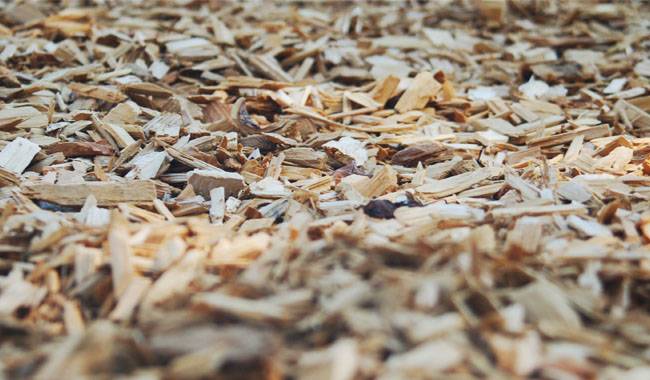
In fact, there are so many materials for mulching that are literally at your fingertips. Of course, the best material for mulching is snow, but not every winter is enough and not every time he can keep it in the bed, especially if it is very high (he also tends to accumulate between the beds, which, of course, is an advantage, but much less).
In addition to snow, you can use ordinary sawdust, which can be obtained for free from any sawmill, where there is plenty of it, as well as small-sized dried branches, reeds, if near a river or pond.
Also, spruce twigs are you can’t say it’s a great mulching material, but it’s surprising that due to its special structure, spruce legs can cover literally any lighter mulching material (for example, leaf litter). Speaking of leaves, if the leaves are healthy, then they make great mulching material when combined with spruce branches. In addition, you can use dry hay, and. Again, from it scattered on your plot, you can use it in combination with cut spruce palms.
Well, covers and novelties are various non-woven mulching materials with different durability, density, resistance, reliability, price, and color, which can also be used as a mulching material:
- Leaves: Before covering strawberries with leaves, it is important to know if it is healthy, free from signs of disease and the presence of pests. It is best to use leaves that take a long time to decompose, such as those of walnut or Manchurian walnut, hepatica, American maple, poplar, oak, which are simply ideal. By the way, these leaves are heavy and if they get damp and frozen, they will be blown away by very strong gusts of wind.
- Wood chips: A cheap and good mulching material that rarely flies away when wet. Most importantly, these should be collected more thoroughly from the strawberry garden in the spring, as they acidify the soil. You only need one bucket of sawdust per square meter of the strawberry seedbed.
- Rags: Of course, there are doubts about rags: whether various pests and diseases accumulate there over the winter, so before covering strawberries with it, you can treat the rags with a 7% solution of Bordeaux mixture, just in case, and then spread it thickly.
- Reeds: You can trim enough reeds around any pond and use it to cover the plantation. Reed is easy to remove, easy to place, won’t be blown away by the wind, and about 1 inch thick is quite enough.
- Spruce and spruce branches: We have almost covered this, and we would like to add: it is best to collect from trees that have been broken or cut down and thrown away; it is not worthwhile to cut spruce branches from healthy, living trees. If you have a forest nearby, then it is likely that you will find a bed or two of a dozen spruce claws, and that will be enough. The main thing is that spruce needles should be distributed over the entire surface of the bed and completely covered with foliage, not in patches.
- Hay: It has “volatile” properties and can literally fly over the whole site, so it must be used in combination with spruce strawberries: cover a layer of 0.8-1.2inch (2-3cm) with hay, then put a spruce paw on top, and so on, to the end of all the beds.
- mulching material: now there are many, different prices, densities, colors. If you have wind and little snow, then take thicker, heavier, if there is a lot of snow – on the contrary, thinner, lighter, etc.
As a final variant of hiding, you can also put various cardboard or other materials on top of the snow that has fallen to shade your area. They will delay the sharp melting of the snow and accumulate more moisture on the plot in the spring, but they should not be left there for a long time: once the active mass melting of snow begins, all improvised materials should be removed, otherwise, they will retard soil warming, plant growth and may lead to uprooting.
TECHNIQUES OF MULCHING STRAWBERRIES
Remember one thing if you have decided to cover strawberries, then cover the entire seedbed, partially cover, or in your case, only the least winter hardy varieties, which will result in nothing. It is recommended to start covering strawberries before the first steady snow cover before the soil starts to freeze heavily, but the temperature will stabilize around 32°F (0°C), with a slight frost in the air at night and a thaw in the morning. And if you get caught in a frost, you need to cover your plants as soon as possible, preferably on the same day.
For those who can’t use any mulching material at all: try to surround the strawberry bed with boards, planks, either new or old, 6inch (15cm) higher than the bed itself, then the snow won’t fly around and will gather in these easy traps, but to be honest, it doesn’t look very good and troublesome, and in my opinion, there is a lot of trouble.
So, whether you want to cover your garden strawberries or leave them as they are, depends on each individual. Again, it all depends on the climatic characteristics of your area, the composition of the soil, the characteristics of the strawberry variety, your strength, and your ability.
But one thing I can honestly tell you is that if you treat your strawberries in a timely manner, removing diseased leaves, trimming whiskers, loosening the soil slightly, etc., when the real frost starts, maybe, clamping the corners with bricks or metal pipes, covering them qualitatively, and in early spring, once everything starts to thaw and the soil will warm up positively, taking away the mulching material and treating the strawberries again, then even in the middle of the United States they will say to you. Thank you very much. The main thing is to do everything with warmth and love, choosing exactly the days when there is nothing else going on when you feel good and have no other worries.




